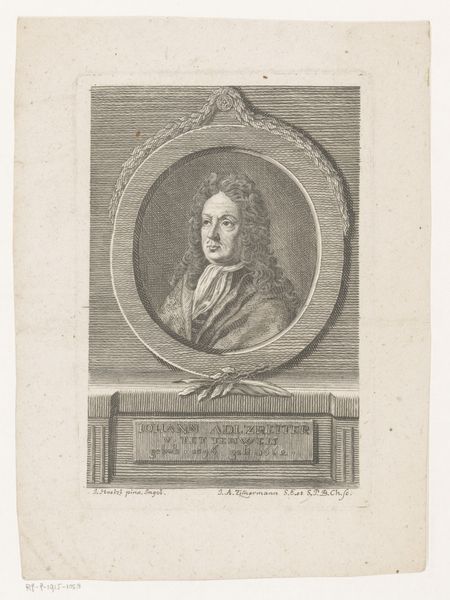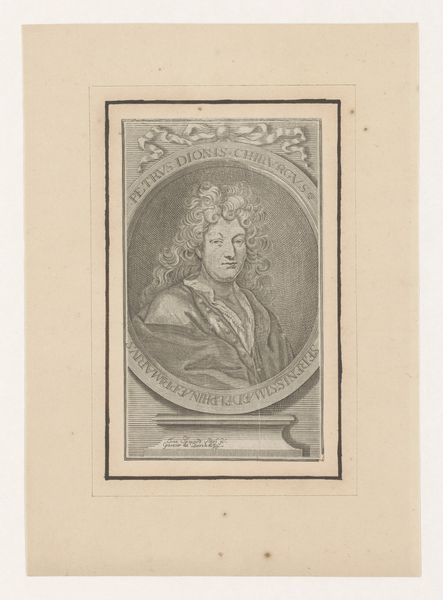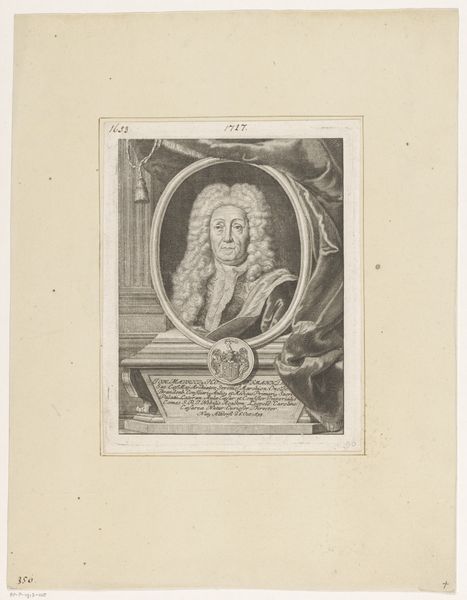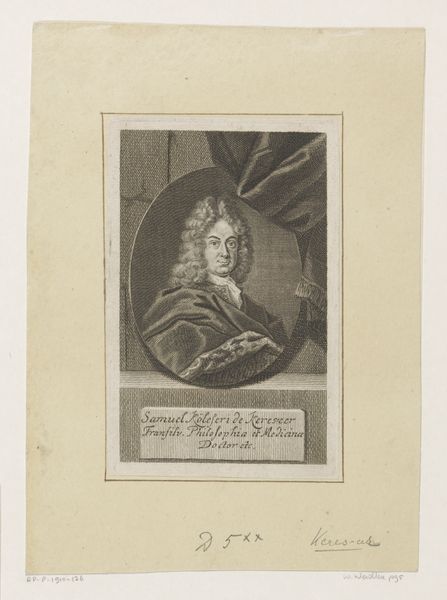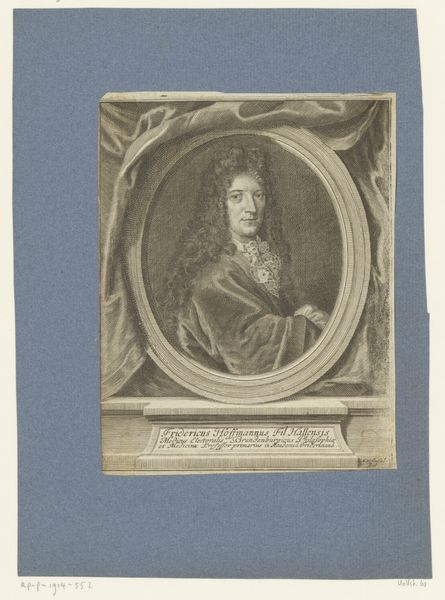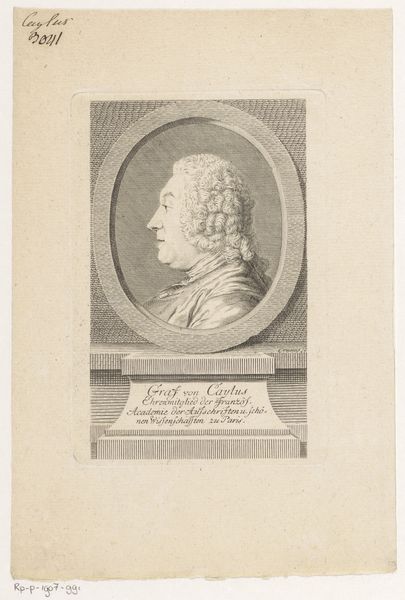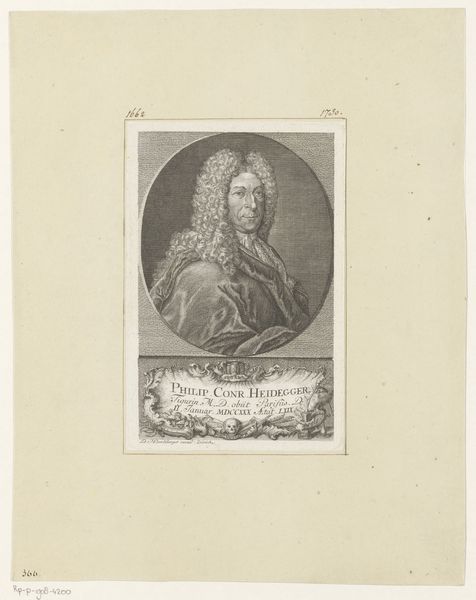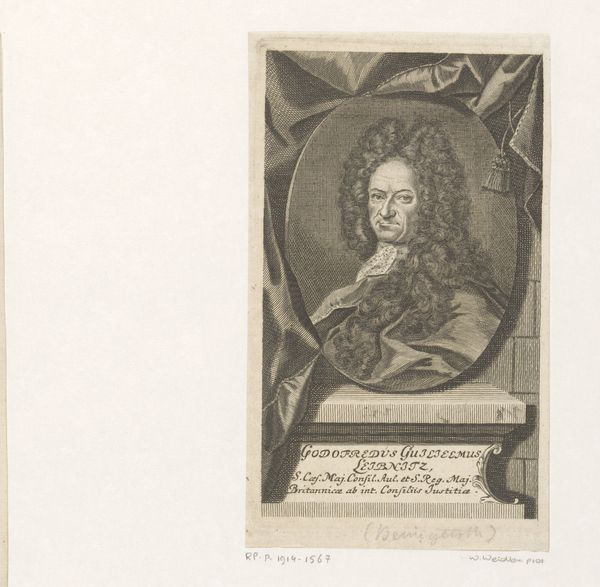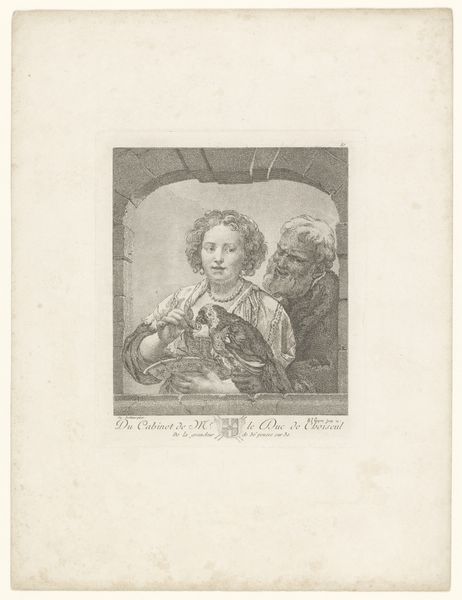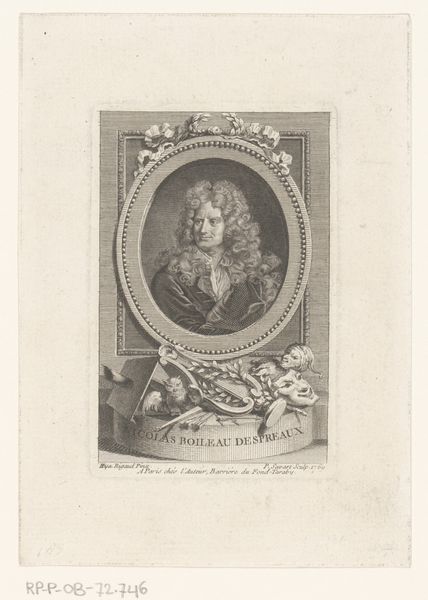
engraving
#
portrait
#
baroque
#
old engraving style
#
15_18th-century
#
academic-art
#
engraving
Dimensions: height 174 mm, width 110 mm
Copyright: Rijks Museum: Open Domain
This is Georg Daniel Heumann’s portrait of Lorenz Heister, a respected surgeon and professor, made using etching and engraving techniques. Heister lived during the Enlightenment, a time when reason and science were increasingly valued over traditional beliefs. He made significant contributions to surgical practices, advocating for more humane treatments. But what did it mean to be humane during this era? The portrait presents Heister in an oval frame, draped with fabric, emphasizing his status and intellectual prowess. Yet, this formal presentation also raises questions about the accessibility of knowledge and who had the privilege to attain it. How did the pursuit of knowledge intersect with social hierarchies? Consider the power dynamics inherent in medical practices of the time. Who had access to healthcare, and whose bodies were subject to medical scrutiny? This portrait invites us to reflect on the complex relationship between progress, privilege, and the human body. How do historical representations shape our understanding of medicine and its impact on diverse populations?
Comments
No comments
Be the first to comment and join the conversation on the ultimate creative platform.
